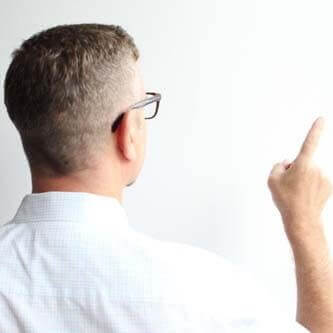The Development of Law and Equity – a Primer
England developed two independent legal systems in its history, and we refer to those systems as “law” and “equity.” Today, we hardly notice the difference, notes Austin-based injury lawyer Adam Ward. The most common remedy a court of law can award is money damages. Equity, however, enters injunctions or decrees directing someone either to act or to forbear from acting. We retain these doctrines, but our system applies them within one court system rather than two separate court systems. The distinction between law and equity is an accident of history. The law courts or courts of law were the courts all over England that enforced the king’s laws in medieval times. At the end of the 13th century the courts of law gradually froze the types of lawsuits they would hear, and the procedure that governed the hearing of those claims. Because the range of legal claims at that time was quite narrow, legal procedures were hopelessly hypertechnical, and jurors were often bribed, the result was that many meritorious plaintiffs were denied relief.
However, one could also obtain a remedy by petitioning the King, who held residual judicial power. Litigants petitioned the King for relief against unfair judgments and the number of petitioners rapidly grew.The petitions were usually phrased in terms of throwing oneself upon the king’s mercy or conscience. Eventually, the king regularly delegated the function of resolving such petitions to the Chancellor, an important member of the King’s Council. At the time, the Chancellor was usually a clergyman and the King’s confessor, so he was literally the keeper of the King’s conscience. Soon the Chancery, the Crown’s secretarial department, began to resemble a judicial body and became known as the “Court of Chancery.”
Lessons of Bleak House
If you’ve ever read Charles Dickens’ Bleak House, you’ll recall his bitter parody of the court of chancery:
“This is the Court of Chancery; which has its decaying houses and its blighted lands in every shire; which has its worn-out lunatic in every madhouse, and its dead in every churchyard . . . there is not an honourable man among its practitioners who would not give–who does not often give–the warning, ‘Suffer any wrong that can be done you rather than come here!'”
By the 15th century, the judicial power of the Chancery was firmly recognized. Mind you, this development was nothing less than a parallel court system with different rules, procedures, and remedies than law courts.
Chancellors in equity courts had no formal legal training, and were not guided by precedent. Their decisions were often widely diverse. However, in 1529 a lawyer, Sir Thomas More, was appointed as Chancellor, marking the beginning of a new era. After this time, all future Chancellors were lawyers, and from around 1557 onwards, records of proceedings in the Courts of Chancery were kept, leading to the development of a reliable set of equitable doctrines.
As the law of equity developed, it inevitably began to rival and conflict with the common law. Litigants would “shop” for the most favorable jurisdiction and often would seek an equitable injunction prohibiting the enforcement of a common law court order. The tension between law and equity erupted in 1615 in Earl of Oxford’s Case. There, a judgment of a law court by Sir Edward Coke was allegedly obtained by fraud. The losers in the law case sued in equity for protection from the allegedly fraudulent order. The court of equity issued an injunction out of the Chancery prohibiting the enforcement of the common law order. The two courts where thus locked in a stalemate. The matter was eventually referred to Sir Francis Bacon, then the Attorney General. Bacon, under authority of King James I, upheld the use of the equity injunction and concluded that in the event of any conflict between the common law and the equity, equity would prevail. Equity’s primacy in England was ultimately enshrined in the Judicature Acts of the 1870s. These acts also served to fuse the courts of equity and the common law (although emphatically not the systems themselves) into one unified court system.
The American legal system inherited the systems of law and equity together, and has always operated both in a unified legal system. Nevertheless, both systems remain firmly established within our courts. Today, when litigants seek damages for torts, they are utilizing the principles of law courts. Likewise, when litigants seek injunctions to prevent future wrongs, they are calling up the doctrines of equity.

Michael Spadaccini is the author of 8 books on self-help legal matters such as, Ultimate LLC Compliance Guide: Covers All 50 States (Ultimate Series), Ultimate Book of Forming Corps, LLCs, Partnerships & Sole Proprietorships, and Ultimate Guide to Forming an LLC in Any State, Second Edition (Ultimate Series).
You can view his Amazon Author Profile Here.

Leave a Reply
Want to join the discussion?Feel free to contribute!